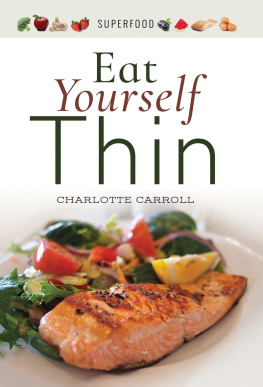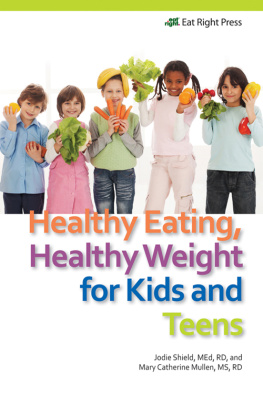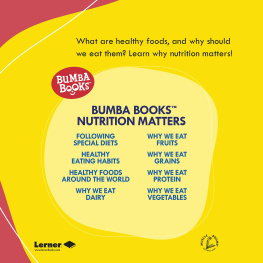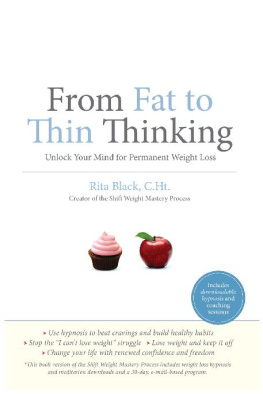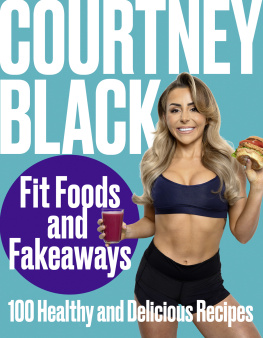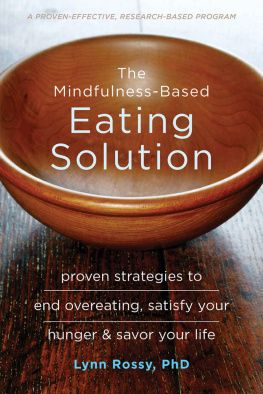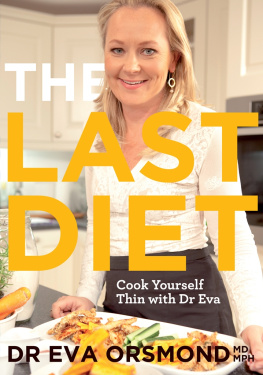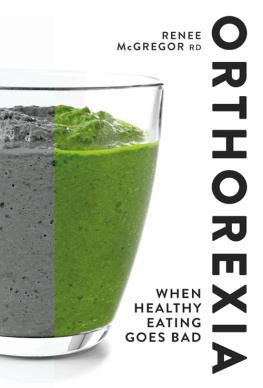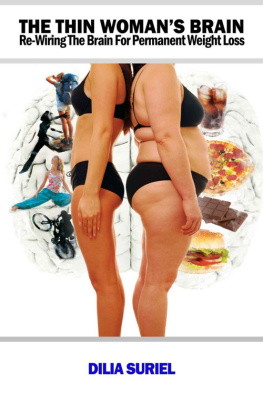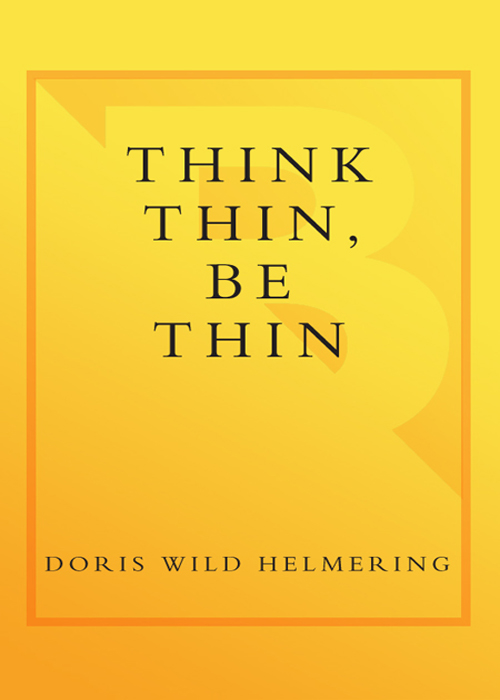
Think
Thin,
Be
Thin
Doris Wild Helmering
and Dianne Hales
BROADWAY BOOKS
NEW YORK
To all who have ever struggled tolose weight
Acknowledgments
Bringing a book to print requires the contributions of many people. We would like to thank Joy Harris, our agent, who was immediately enthusiastic about the idea for this book and who has supported us throughout its creation. Thanks to Jennifer Josephy and Allyson Giard, our editors at Broadway Books, who played an invaluable role in shaping Think Thin, Be Thin.
We send special thanks to Pat Gregory at St. Louis University, who allowed herself to be leaned on for research; Judy Cassidy and Roger McWilliams for lending fresh eyes to the material; and special thanks, as always, to Michaeleen Cradock for holding down the fort at the office when Doris was off writing. Gold stars to April Winkelmann, Kate Drewry, Jo Oberreither, Catherine Von Hatten, and Jan Thomas, who all contributed to the process.
A very special thanks to Dr. Robert E. Hales and Dr. Ray Helmering, the two loves of our lives, who as always offered support and encouragement. Love and hugs to Julia Hales and Anna-Mary Helmering and our loving parents. And many more thanks to cheerleaders Layne, Paul, Sheri, and John Helmering; Korey Hart; Sharon Endejan; Mary Sue Wofford; Mary Jane Lamping; and Martha Scharff, who all gave encouragement and support.
Introduction
N everbefore have so many had so much to lose. For the first time in history, morethan half of the people on the planet are overweight. Obesity, as headlinesblare and health experts warn, is the major preventable health threat of thetwenty-first century. In the United States alone, obesity annually leads to300,000 premature deaths and $90 billion in medical costs.
Ironically, as average weights have increased, the quest for thinness hasbecome an obsession. Every year tens of millions of people15 to 35percent of Americans, by various estimatesgo on diets to lose weight. Nomatter how much they lose, 90 to 95 percent regain not only the weight theylost but additional pounds. Why?
Our contention, based on decadesof scientific research and clinical experience, is that most diets and fitnessprograms aim at the wrong target: the belly, not the brain. Although they canand do work for a while, these approaches focus on the symptom of weight gainrather than its underlying cause. Diets change what you eat. Exercise changesbody composition, stamina, and strength. But changing the brain is the ultimatekey to weight loss and control.
Think Thin, Be Thin is thefirst book to target the neuro-landscape of your brainthe way you thinkand feel about eating. Unlike diets or weight-loss programs, this book engagesthe most powerful of toolsthe human brain. As you read the informationand practice the mental and sensory exercises in Think Thin, Be Thin,your brain, which contains hundreds of billions of nerve cells, will developnew neural pathways. As a result, the way you think about food will change, theway you feel about your body will change, and your eating behaviors willchange. And you will lose weight.
Are you already on a diet? Haveyou joined a health club or signed up for a commercial weight-loss program?Dont quit. Think Thin, Be Thin complements rather than competeswith any diet or fitness plan. As a diet companion, Think Thin, BeThin will put you on track, keep you on track, or help you get back ontrack. You will eat less, not just because you are following a specific diet,but because you will stop wanting extra food.
Putting Psychology toWork for You
As researchers have demonstrated, hunger has lessinfluence on how much people eat than their attitudes toward food. Changingthese attitudes is crucial to changing your eating habits. This is exactly whatThink Thin, Be Thin does. This book, like its title, may seem simple,but the science behind it is anything but. Every aspect is rooted in rigorouslytested, well-established psychological approaches, including:
Cognitive-behavior therapy (CBT), proven the most effectivetherapy for change and problem solving, emphasizes making changes in the wayyou think and the way you behave. The premise of CBT is that your thoughts andbehaviorsincluding those related to eatingcan be modified in waysthat lead to permanent change.
Neurolinguisticprogramming (NLP), a collection of tools for analyzing how youcommunicate and organize, filter, and edit information, uses conscious changesin language to create new thinking patterns, which can lead to new eatinghabits.
Compliance theory, which reveals hiddeninfluences on behavior, helps you recognize and make use of the laws ofinfluence to shed excess pounds.
Gestalttherapy focuses on self-understanding and taking personalresponsibility for your behavior, including weight loss and maintenance.
Transactional analysis explores healthy andunhealthy dialogues and interactions that may thwart your efforts to loseweight.
Positive psychology, a relatively newscientific field that studies optimal functioning, helps you develop thestrengths that will allow you to control your weight.
Naikan and Conscious Living. These quiettherapies, based on Buddhism, redirect the mind away from difficulties andnegative feelings toward more productive thoughts and behaviorand alower weight.
Putting This Book to Work for You
How dowe know that the material in Think Thin, Be Thin will help you getcontrol of your weight? Weve seen it happen when people enter therapy,either individually or in groups, in order to lose weight. Slowly, steadily,sensibly, they lose excess pounds and keep them off.
Next page

